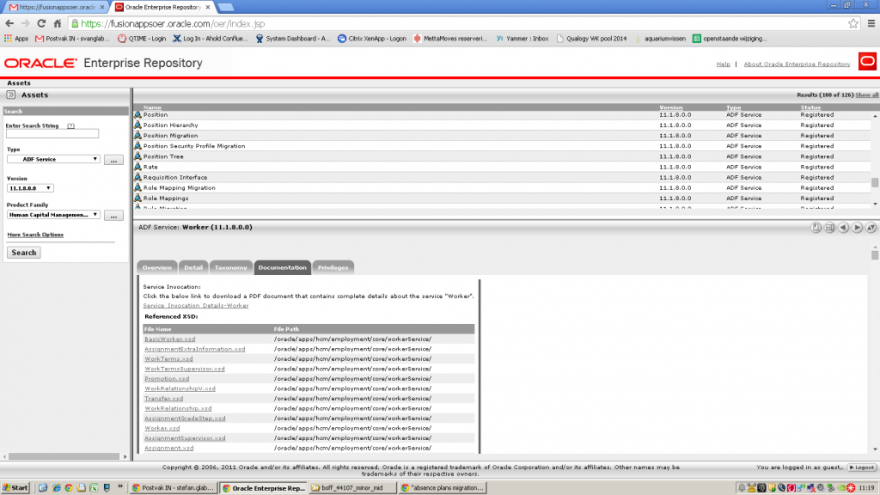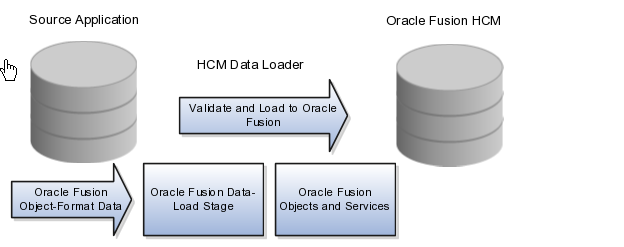Integrating Oracle Fusion HCM with other applications
Gepubliceerd: Auteur: Stefan van Glabbeek Categorie: OracleThere is a lot of discussion about how Fusion HCM can be integrated with other applications. A wide variety of functionalities that a customer could need is already present in Fusion, but there is still some functionality that is simply not there. And there will always be other reasons why customers have a need for different applications in their organizations.
In practice, it is a MUST to be able to set up communication from your application with other applications. The same goes for Fusion HCM, but how do you do that?
There are concepts in Fusion like coexistence (which implies integration), File Based Loaded (FBL), spreadsheet loader and some talk about web services. But what it is, how it works and when to use it is unclear for many people. It seems that a lot of these concepts go by different names, which makes the confusion even bigger. In this blog, I want to make summarize the features that are ready to use for integration in version 8 at this moment.
Web services
The first thing I would like to talk about is web services. One of the main aspects of Fusion Middleware is SOA. In the Oracle Enterprise Repository (OER) is a complete list with documentation of all web services in Fusion. If you filter for version 11.1.8.0.0 in search criteria, and you choose Human Capital Management as product family, you’ll find a list of services.

Most of the web services with messaging are presented here as ADF Services. Although there are a lot of interesting services in the list, it appears most services are for internal use only. That means that these services are used by Fusion to communicate with other functionalities within Fusion. In his blog, Jani Rautiainen writes how you should search for the keyword “EXTERNAL”, in order to find the services that you can use for integration with applications other than Fusion.
Unfortunately, this rules out almost all services. It appears that all of the services that remain in the search results are file based integrations:

So actually, if you want to use messaging as a means for the integration of Fusion HCM, you should deploy on premise. Then you can write your own messaging using SOA Suite for instance.
Coexistence
Coexistence means that you have a part of your functionality in Fusion HCM and another part of your functionality in Oracle EBS or PeopleSoft (or some other application of your choice). This can work, if you have a good integration between the two applications. For the integration between Fusion HCM and EBS or PeopleSoft, HRtoHR is mentioned in a lot of blogs and documentation documents.

However, it appears that Oracle doesn’t support HRtoHR anymore, starting from version 8. Nevertheless, in the list of the picture above, the file based processes belonging to HRtoHR are still present in the OER. It’s all file based integration, and therefore not completely different from the standard recommended way for file based integration, which is the File Based Loader (FBL).
More info on both methods of file based integration can be found in this blog by Mehabub Sheikh.
When using FBL, you should write your own extraction in EBS or PeopleSoft. In EBS you could do that with SQL, spool to a CSV-file and upload it. In PeopleSoft you would probably want to make an application engine with SQL in it. You can also make a data extract in EBS. See this link for more information.
Next to FBL, there is also the spreadsheet loader that uploads a spreadsheet. This could be handy, but is much slower. There are some tables that can be uploaded with the spreadsheet loader only, and not with FBL, both in Core HCM as well as in Talent. See this link for more information.
Apart from uploading to Fusion, you would also want to be able to extract data from Fusion, and upload it into your other application. There are some pages in Fusion where you can hit a link to download the grid to Excel. But one feature that I find to be very handy is HCM extracts. You use it to create XML files (or other formats like CSV and Excel), that you can upload into your other application. This is very comparable with the HCM extracts that you can make in Oracle EBS. See this link for more information.
You need to be able to upload the extracts in EBS, PeopleSoft or something else, and then create your uploading batch process there.
Another interesting point; In Fusion, FBL spreadsheet loader and HCM extracts are processes that can’t be scheduled automatically. They have to be run manually which makes the integration less smooth.
Conclusion
To integrate Fusion HCM with other applications, there are no web services available according to the documentation in OER. So far, we have seen that we can upload data into Fusion with FBL and spreadsheet loader. And you can make data extracts in Fusion and upload them into another application. You should still build your extract/import routines in other applications. Furthermore, you can’t schedule FBL and spreadsheet loader in Fusion, which means that your integration will have the need for an employee who performs these manual tasks on a regular basis.




